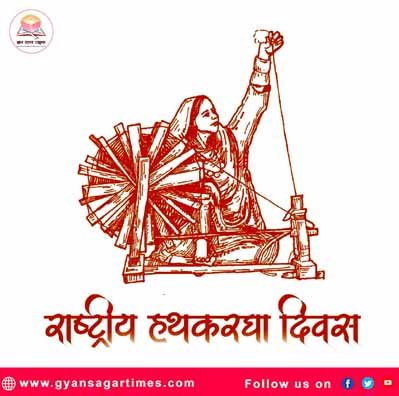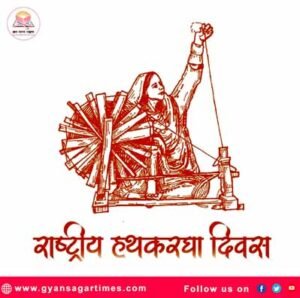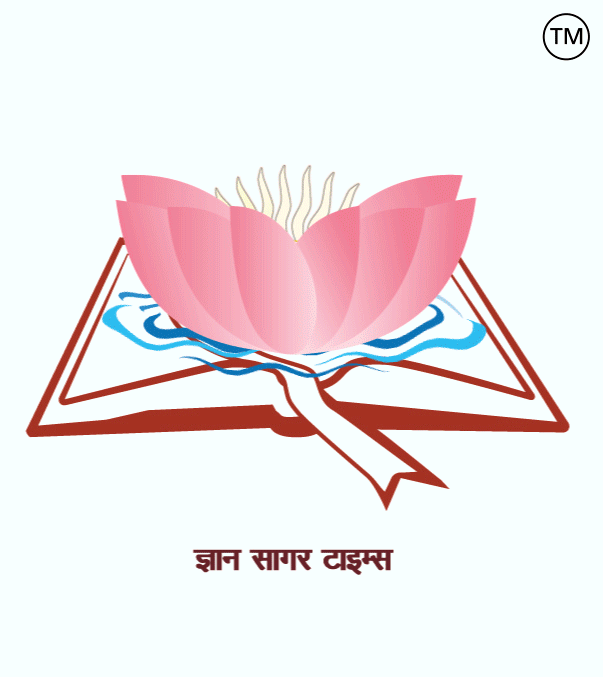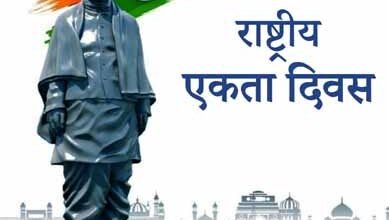
राष्ट्रीय हथकरघा दिवस
भारत में प्रतिवर्ष 7 अगस्त को राष्ट्रीय हथकरघा दिवस जाता है. यह एक दिवस या तिथि नहीं है बल्कि यह भारत की सांस्कृतिक विरासत, आत्मनिर्भरता और बुनकरों की कला को सम्मान देने का एक प्रतीक है. यह दिन उस ऐतिहासिक क्षण की याद दिलाता है जब वर्ष 1905 में स्वदेशी आंदोलन की शुरुआत हुई थी. एक ऐसा आंदोलन जिसने विदेशी वस्त्रों के बहिष्कार और स्वदेशी उत्पादों के समर्थन की नींव रखी गई थी.
राष्ट्रीय हथकरघा दिवस की शुरुआत 7 अगस्त 2015 को पीएम मोदी ने चेन्नई में की थी. चूकिं, 7 अगस्त, 1905 को स्वदेशी आंदोलन की शुरुआत हुई थी. इस आंदोलन का उद्देश्य ब्रिटिश निर्मित वस्तुओं का बहिष्कार करना और भारत में बने उत्पादों को बढ़ावा देना था, जिसमें हथकरघा उत्पाद प्रमुख थे. हथकरघा दिवस स्वदेशी आंदोलन की भावना को पुनः जीवंत करता है और आत्मनिर्भर भारत के संकल्प को मजबूत करता है.
हथकरघा उद्योग भारत की सदियों पुरानी परंपरा का हिस्सा है. यह सिर्फ एक व्यवसाय नहीं, बल्कि एक कला और संस्कृति है. भारत के विभिन्न राज्यों में हथकरघा उत्पाद अपनी विशिष्ट पहचान रखते हैं, जैसे कि बनारसी साड़ियाँ, कांचीपुरम सिल्क, पटोला, चंदेरी, और पोचमपल्ली. ये उत्पाद न केवल अपनी सुंदरता और शिल्प कौशल के लिए जाने जाते हैं, बल्कि ये एक क्षेत्र की सांस्कृतिक पहचान और इतिहास को भी दर्शाते हैं.
हथकरघा उद्योग कृषि के बाद भारत में सबसे अधिक रोजगार प्रदान करने वाले क्षेत्रों में से एक है.35 लाख से अधिक बुनकर और श्रमिक इस क्षेत्र से जुड़े हैं, जिनमें से लगभग 72% महिलाएँ हैं. यह महिला सशक्तिकरण का एक सशक्त उदाहरण है. यह उद्योग भारत की पारंपरिक कलाओं और शिल्प कौशल को जीवित रखता है. प्रत्येक हथकरघा उत्पाद में बुनकर के श्रम, धैर्य और रचनात्मकता का प्रतिबिंब होता है. हथकरघा उद्योग स्थानीय संसाधनों पर निर्भर करता है और ग्रामीण अर्थव्यवस्था को मजबूत करता है. यह बुनकरों को अपनी आय का साधन प्रदान कर उन्हें आत्मनिर्भर बनाता है.
सरकार ने हथकरघा उद्योग को बढ़ावा देने और बुनकरों की स्थिति में सुधार लाने के लिए कई कदम उठाए हैं. जिनमें – बुनकरों को कार्यशील पूंजी और ऋण उपलब्ध कराने के लिए यह योजना शुरू की गई है.हथकरघा संवर्धन योजना के तहत बुनकरों को तकनीकी उन्नयन, डिजाइन विकास और कच्चे माल की खरीद में सहायता प्रदान की जाती है.वहीं, इंडिया हैंडलूम ब्रांड हथकरघा उत्पादों की प्रामाणिकता और गुणवत्ता सुनिश्चित करता है, जिससे उपभोक्ताओं का विश्वास बढ़ता है. सरकार ने हथकरघा उत्पादों को ऑनलाइन बेचने के लिए विभिन्न ई-कॉमर्स कंपनियों के साथ साझेदारी की है, जिससे बुनकरों को एक बड़ा बाजार मिल सके.
हथकरघा उद्योग को कई चुनौतियों का सामना करना पड़ रहा है, जैसे – आधुनिक मशीनों द्वारा बनाए गए सस्ते और तेजी से बनने वाले उत्पादों से हथकरघा उत्पादों को कड़ी प्रतिस्पर्धा मिल रही है. उच्च गुणवत्ता वाले कच्चे माल की कमी और बढ़ती कीमतें बुनकरों के लिए एक बड़ी समस्या है. कई बुनकर अभी भी बड़े शहरों और विदेशी बाजारों तक सीधे पहुंच बनाने में असमर्थ हैं. दूसरी ओर, नई पीढ़ी इस पारंपरिक कला को अपनाने में कम रुचि दिखा रही है, जिससे इस कला के विलुप्त होने का खतरा बढ़ रहा है.
राष्ट्रीय हथकरघा दिवस हमें यह याद दिलाता है कि आत्मनिर्भरता केवल आर्थिक नहीं, बल्कि सांस्कृतिक भी होती है. यह दिन बुनकरों की कला, उनके संघर्ष और उनके योगदान को सम्मानित करने का अवसर है. जब भी हम हथकरघा वस्त्र पहनते हैं, तो हम केवल कपड़ा नहीं, बल्कि भारत की आत्मा को भी ओढ़ते हैं.
========== ========= ===========
National Handloom Day

National Handloom Day is celebrated every year on 7 August in India. It is not a day or date, but it is a symbol of respecting India’s cultural heritage, self-reliance and the art of weavers. This day commemorates the historic moment when the Swadeshi movement started in the year 1905. A movement that laid the foundation for the boycott of foreign textiles and support of indigenous products.
National Handloom Day was started by PM Modi in Chennai on 7 August 2015. Since the Swadeshi movement started on 7 August 1905. This movement aimed to boycott British-manufactured goods and promote products made in India, in which handloom products were prominent. Handloom Day revives the spirit of the Swadeshi movement and strengthens the resolve of self-reliant India.
The handloom industry is part of India’s centuries-old tradition. It is not just a business, but an art and culture. Handloom products in different states of India have their own unique identity, such as Banarasi sarees, Kanchipuram silk, Patola, Chanderi, and Pochampalli. These products are not only known for their beauty and craftsmanship, but also reflect the cultural identity and history of a region.
The handloom industry is one of the largest employment-providing sectors in India after agriculture. More than 35 lakh weavers and workers are engaged in this sector, of which about 72% are women. It is a strong example of women’s empowerment. This industry keeps the traditional arts and craftsmanship of India alive. Each handloom product reflects the labour, patience, and creativity of the weaver. The handloom industry relies on local resources and strengthens the rural economy. It makes weavers self-reliant by providing them with a source of income.
The government has taken several steps to promote the handloom industry and improve the condition of weavers. In which – This scheme has been started to provide working capital and loans to the weavers. Under the Handloom Promotion Scheme, weavers are assisted in technical upgradation, design development and purchase of raw materials. At the same time, the India Handloom Brand ensures the authenticity and quality of handloom products, which increases the confidence of consumers. The government has partnered with various e-commerce companies to sell handloom products online, so that weavers can get a bigger market.
The handloom industry is facing many challenges, such as – Handloom products are facing tough competition from cheap and fast-made products made by modern machines. Lack of high-quality raw materials and rising prices are a big problem for weavers. Many weavers are still unable to get direct access to big cities and foreign markets. On the other hand, the new generation is showing less interest in adopting this traditional art, increasing the risk of extinction of this art. National Handloom Day reminds us that self-reliance is not just economic but also cultural. This day is an occasion to honour the art, struggle and contribution of the weavers. Whenever we wear handloom garments, we wear not just cloth but the soul of India.





